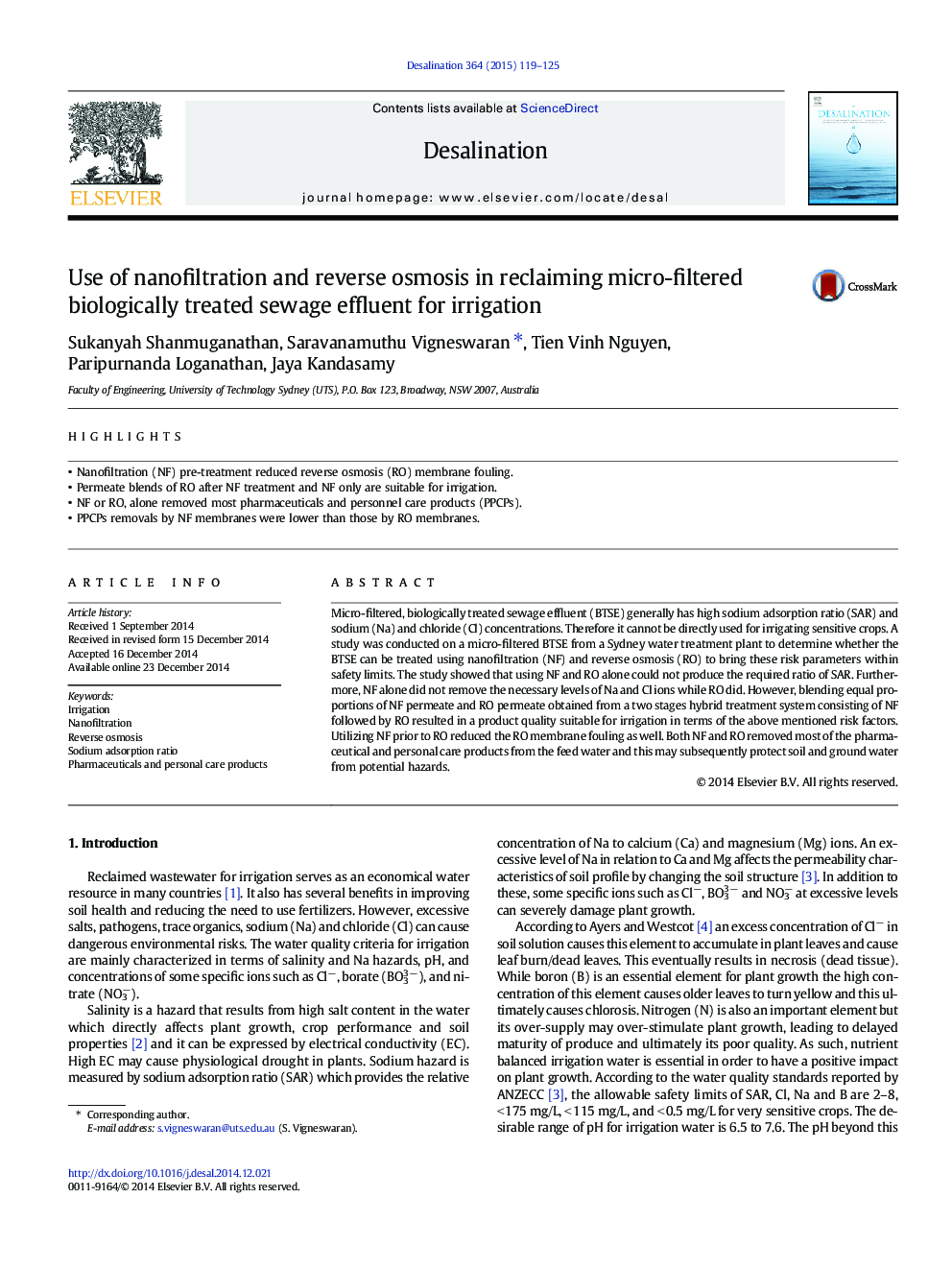| کد مقاله | کد نشریه | سال انتشار | مقاله انگلیسی | نسخه تمام متن |
|---|---|---|---|---|
| 623142 | 1455331 | 2015 | 7 صفحه PDF | دانلود رایگان |
• Nanofiltration (NF) pre-treatment reduced reverse osmosis (RO) membrane fouling.
• Permeate blends of RO after NF treatment and NF only are suitable for irrigation.
• NF or RO, alone removed most pharmaceuticals and personnel care products (PPCPs).
• PPCPs removals by NF membranes were lower than those by RO membranes.
Micro-filtered, biologically treated sewage effluent (BTSE) generally has high sodium adsorption ratio (SAR) and sodium (Na) and chloride (Cl) concentrations. Therefore it cannot be directly used for irrigating sensitive crops. A study was conducted on a micro-filtered BTSE from a Sydney water treatment plant to determine whether the BTSE can be treated using nanofiltration (NF) and reverse osmosis (RO) to bring these risk parameters within safety limits. The study showed that using NF and RO alone could not produce the required ratio of SAR. Furthermore, NF alone did not remove the necessary levels of Na and Cl ions while RO did. However, blending equal proportions of NF permeate and RO permeate obtained from a two stages hybrid treatment system consisting of NF followed by RO resulted in a product quality suitable for irrigation in terms of the above mentioned risk factors. Utilizing NF prior to RO reduced the RO membrane fouling as well. Both NF and RO removed most of the pharmaceutical and personal care products from the feed water and this may subsequently protect soil and ground water from potential hazards.
Journal: Desalination - Volume 364, 15 May 2015, Pages 119–125
